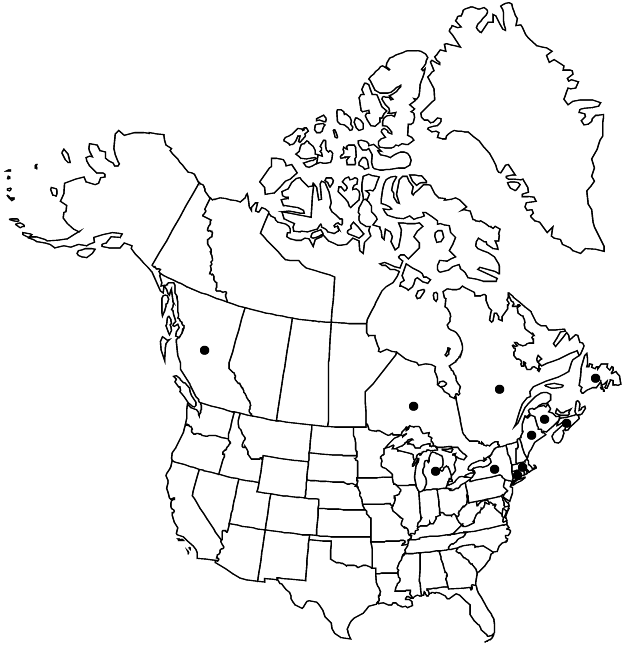Difference between revisions of "Primula veris"
Sp. Pl. 1: 142. 1753 ,.
FNA>Volume Importer |
FNA>Volume Importer |
(No difference)
| |
Revision as of 23:03, 16 December 2019
Plants 8–30 cm, herbaceous; rhizomes thick, short; rosettes sometimes clumped, vegetative parts efarinose but often pubescent. Leaves not aromatic, indistinctly or abruptly petiolate; petiole winged; blade with deep reticulate veins abaxially, ovate to ovate-oblong, 5–20 × 2–6 cm, thin, membranaceous in age, margins coarsely toothed, apex acute to obtuse, surfaces pubescent, hairs simple. Inflorescences 5–16-flowered; involucral bracts plane, unequal. Pedicels erect to drooping, moderately thick, 3–20 mm, length 1–3 times bracts, flexuous. Flowers heterostylous; calyx pale green, broadly campanulate, 0.8–2 cm; corolla yellow, with orange spots at base of lobes, tube 8–20 mm, length to 1 times calyx, eglandular, limb 8–28 mm diam., lobes 8–14 mm, apex slightly emarginate to distinctly notched. Capsules ovoid, length to 1 times calyx. Seeds without flanged edges, minutely vesiculate. 2n = 22 (Europe).
Phenology: Flowering spring.
Habitat: Meadows and pastures, persisting around old gardens and homesteads, apparently substantially spreading and naturalized
Elevation: 0-1000 m
Distribution

B.C., N.B., Nfld. and Labr. (Nfld.), N.S., Ont., Que., Conn., Maine, Mass., Mich., N.Y., Europe.
Discussion
Primula veris shows exceptional morphological variation in Europe, with multiple specific and infraspecific names. It is a popular garden plant both here and in Europe; horticultural varieties abound and are almost certainly represented among the records from North America.
Selected References
None.